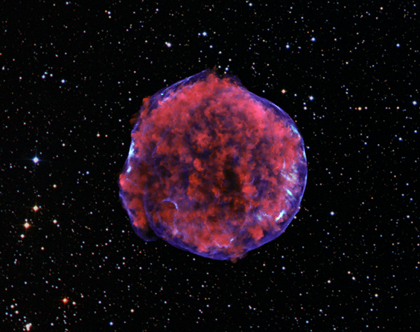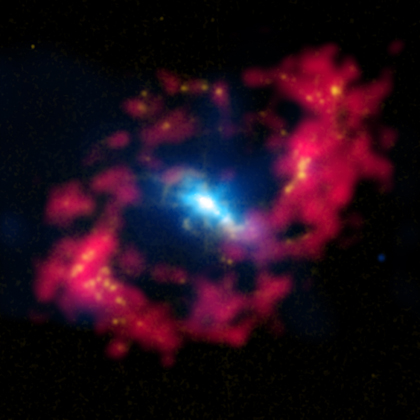"From Earth to the Solar System Lifts" Off
We are very excited to announce the launch of a new – and yet somewhat familiar -- project. Today, “From Earth to the Solar System” officially opens. As the name implies, FETTSS (our new favorite acronym) is a direct descendent of the “From Earth to the Universe” project.
Hunting for the Milky Way's Heaviest Stars
Like looking for Easter eggs in a lawn of long grass, the hunt for the Milky Way's most massive stars takes persistence and sharp eyes. In their stellar search through our Galactic backyard, astronomers have used powerful telescopes sensitive to X-ray and infrared radiation to find evidence for a substantial population of X-ray emitting massive stars.
Flute Duet Like no Other
Cady Coleman was one of the astronauts who helped launch Chandra aboard the Space Shuttle Columbia back in July 1999. While we have always appreciated her many talents -- chemist, Air Force officer, astronaut, and mother -- we didn’t realize that we were missing out on another: flutist.
Chandra Observes Extraordinary Event
The center of this image contains an extraordinary gamma-ray burst (GRB) called GRB 110328A, observed with NASA's Chandra X-ray Observatory. This Chandra observation confirms the association of GRB 110328A with the core of a distant galaxy and shows that it was an exceptionally long lived and luminous event compared to other GRBs.
2011 Einstein Fellows Announced
This week, NASA announced the selection of three prestigious fellowships, each named after a distinguished scientist: Einstein, Hubble, and Sagan. Every year, NASA awards these fellowships to recent Ph.D.s in astronomy, physics or a related field. The Chandra X-ray Center oversees the Einstein Fellowships, which cover the topics in high-energy astrophysics. The Space Telescope Science Institute runs the Hubble Fellowships, and JPL is in charge of the Sagan ones.
Exploding Stars and Stripes
This image comes from a very deep Chandra observation of the Tycho supernova remnant, produced by the explosion of a white dwarf star in our Galaxy. Low-energy X-rays (red) in the image show expanding debris from the supernova explosion and high energy X-rays (blue) show the blast wave, a shell of extremely energetic electrons . These high-energy X-rays show a pattern of X-ray "stripes" never previously seen in a supernova remnant. By rolling the mouse over the color image above, two regions containing stripes in the high energy image can be seen superimposed on the full color version. Some of the brightest stripes can also directly be seen in the full color image, on the right side of the remnant pointing from the outer rim to the interior. The stellar background is from the Digitized Sky Survey and only shows stars outside the remnant.
Sound in Space
People seem to be fascinated with the concept of sound in space. This was just underscored for us when we saw this great TED talk by physicist Janna Levin.
We have some personal experience with the public’s interest in the topic. Way back in 2003, we did a story on the black hole at the center of the Perseus Cluster. The energy generated by the giant black hole was responsible for sound waves propagating through the intercluster gas. (If you're curious, the black hole was bleating out a B flat some 52 octaves below middle C.)
You Can Call Me Al
OK, you probably couldn’t with Albert Einstein (who most likely wouldn't have appreciated the Paul Simon reference.) If Einstein had lived, he would have been celebrating his 132nd birthday today. Alas, he sadly died back in 1955, but, as we all know, he managed to squeeze in quite a bit during those years.
An Active Black Hole in the "Eye of Sauron"
This composite image shows the central region of the spiral galaxy NGC 4151, dubbed the "Eye of Sauron" by astronomers for its similarity to the eye of the malevolent character in "The Lord of the Rings". In the "pupil" of the eye, X-rays (blue) from the Chandra X-ray Observatory are combined with optical data (yellow) showing positively charged hydrogen ("H II") from observations with the 1-meter Jacobus Kapteyn Telescope on La Palma. The red around the pupil shows neutral hydrogen detected by radio observations with the NSF's Very Large Array. This neutral hydrogen is part of a structure near the center of NGC 4151 that has been distorted by gravitational interactions with the rest of the galaxy, and includes material falling towards the center of the galaxy. The yellow blobs around the red ellipse are regions where star formation has recently occurred.






